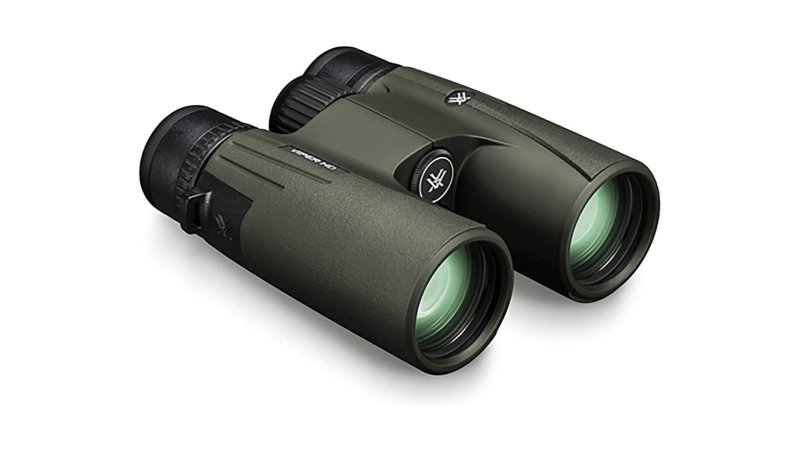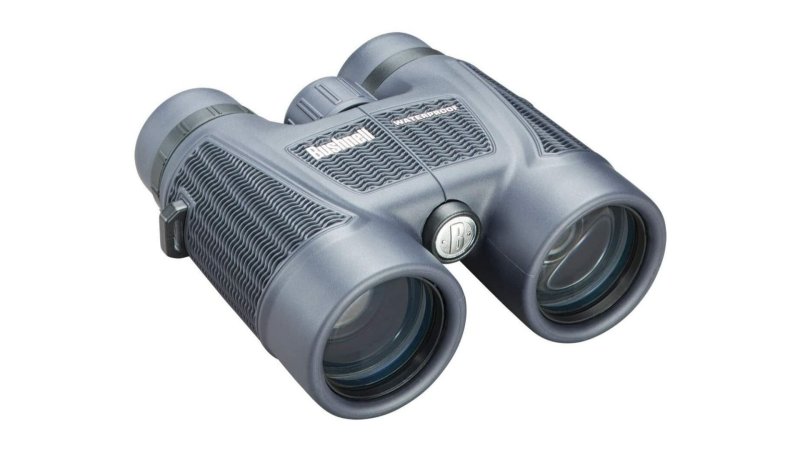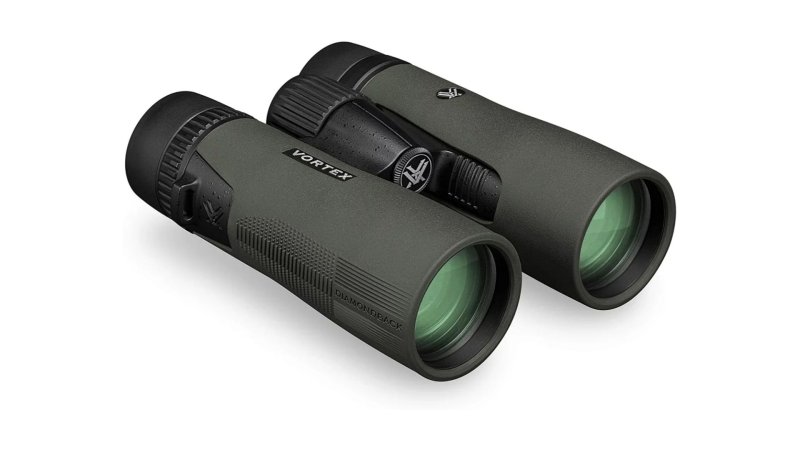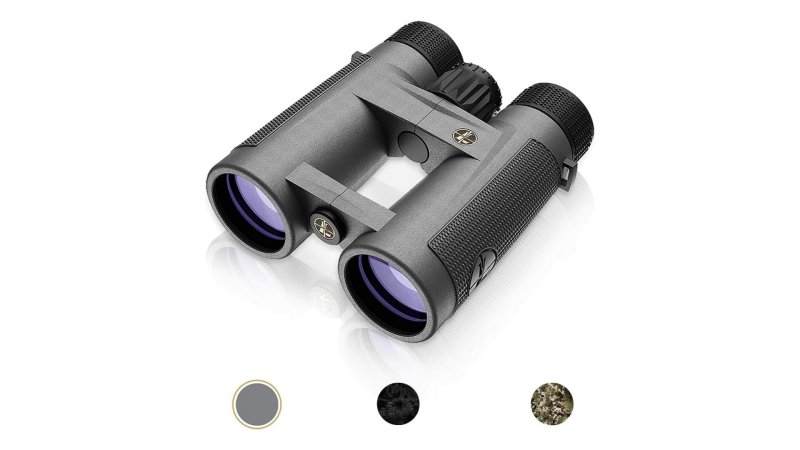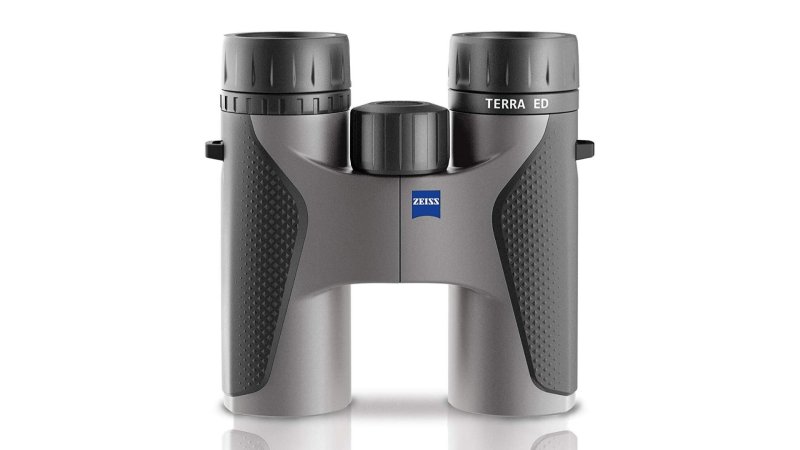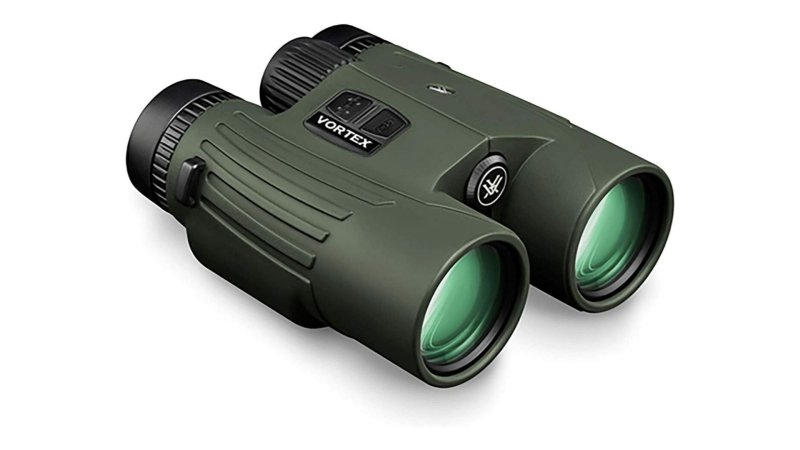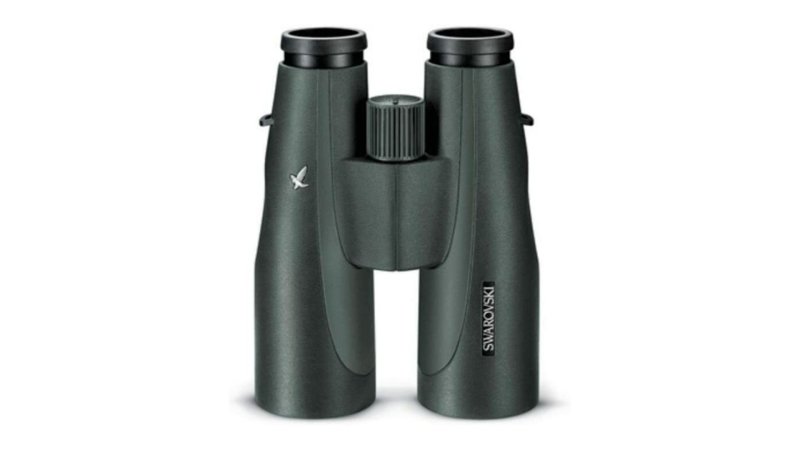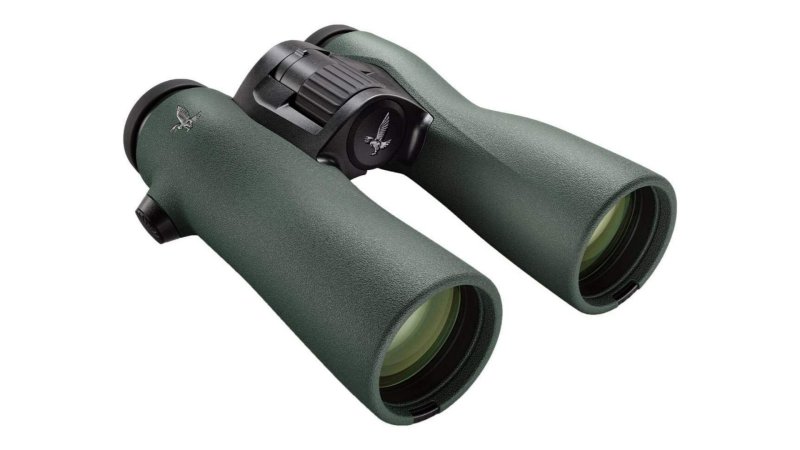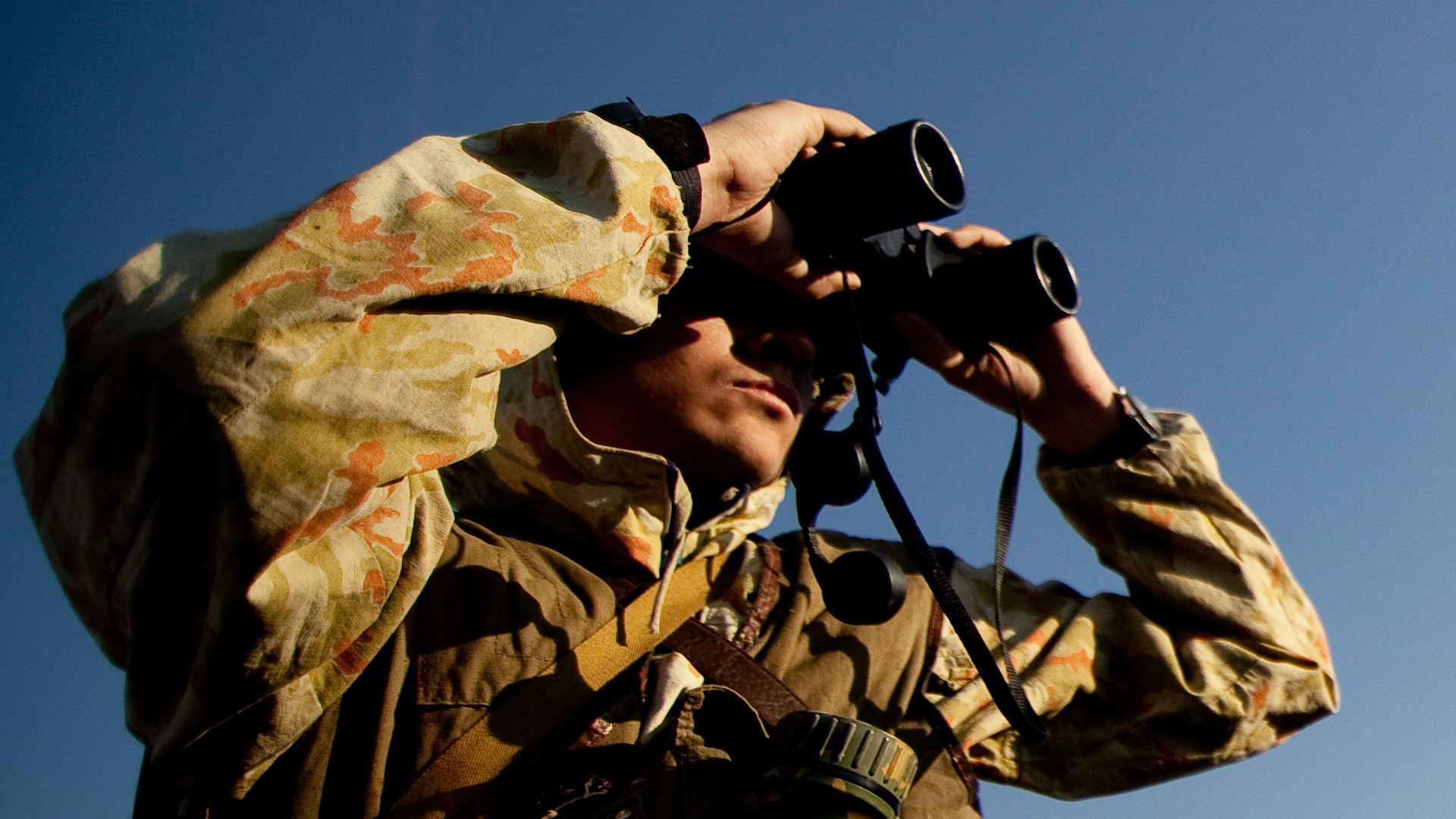

We may earn revenue from the products available on this page and participate in affiliate programs.
When it comes to finding the best binoculars for hunting, there’s always more than meets the eye. Having the right optics can be the difference between putting meat on the table and just taking a glorified hike in the woods. There’s a plethora of factors to consider when finding the right hunting binoculars and it’s important to understand how each functionality applies to your particular needs.
Growing up in western Michigan with a deer-hunter dad, I am no stranger to hunting binoculars. Some of my earliest memories involve being wedged into the fold-out seats of my dad’s ‘96 Ford Ranger Super Cab and driving around at dusk, “scouting” for deer. Now we weren’t out shining deer or doing anything illegal if that’s what you’re thinking. In fact, my dad had a consistent place where he’d bow hunt from, but I think driving around, scouting for deer, got him amped up for hunting season. Growing up in a town with lots of far-reaching cornfields, deer weren’t always easy to see and my dad always kept a pair of hunting binoculars in the door of his truck to ensure he could get an accurate count of the herd or the rack of a buck.
Occasionally, my brother and I would get to fight over first dibs on the binoculars, and he, being four years older, would usually win. But when it was my turn to look, I remember frequently struggling to locate close groups of deer or take the shake out of long-distance looks. I always figured that was just the nature of binoculars. Boy, was I wrong.
In the review below, I hope to not only give you some good recommendations on quality binos, but also share some of the technical aspects I’ve learned over the years and how they relate to the individual need. Hopefully, it will leave you in a better place for making an informed decision before your next big hunt. And hopefully, it will help you put some meat in the freezer.
Best Overall
Vortex Optics Viper HD Roof Prism Binoculars
Pros
- Fully multi-coated lenses
- Argon purged to prevent fogging
- Scratch-resistant coating on exterior lenses
- Vortex VIP lifetime warranty
- Lightweight and durable
Cons
- Semi-higher price
- Single color option
Product Specs
- Model: 10×42 (10 time magnification/42 mm objective lens diameter)
- Field of view: 341 feet/1,000 yards
- Weight: 24.9 ounces
Best Value
Bushnell H2O Roof Prism Binoculars
Pros
- Affordably priced
- Nitrogen purged to prevent fogging
- Long eye relief
Cons
- Single color option (black)
- Only multi-coated
- Doesn’t come with extras (harness/carrying case)
Product Specs
- Model: 10×42 (10 time magnification / 42 mm objective lens diameter)
- Field of view: 305 feet/1,000 yards
- Weight: 25 ounces
Editor’s Choice
Vortex Optics Diamondback HD 10x 42 Binoculars
Pros
- Affordable cost
- Argon purged to prevent fogging
- Fully multi-coated lenses
- Scratch-resistant coating on exterior lenses
- Vortex VIP lifetime warranty
Cons
- Single color option
Product Specs
- Model: 10×42 (10 times magnification/42 mm objective lens diameter)
- Field of view: 330 feet/1,000 yards
- Weight: 21.3 ounces
Best Low Light Binoculars
Leupold BX-4 Pro Guide HD Binoculars
Pros
- Twilight Max HD Light Management System
- Fully multi-coated lenses
- Waterproof and fogproof
Cons
- Semi-higher price
- Single color option
Product Specs
- Model: 10×42 (10 times magnification/42 mm objective lens diameter)
- Field of view: 326 feet/1,000 yards
- Weight: 24 ounces
Best Compact Binoculars
Zeiss Terra ED Binoculars
Pros
- Light weight
- Compact size for easy storage
- Large field of view
Cons
- Pocket size only available with 25mm objective lenses
- Warranty not as good as other brands
Product Specs
- Model: 8×25 (8 times magnification/25 mm objective lens diameter)
- Field of view: 357 feet/1,000 yards
- Weight: 10.9 ounce
Best Binoculars With Rangefinder
Vortex Optics Fury HD 5000 10×42 Laser Rangefinding Binoculars
Pros
- Top of the line ranging technology
- Fully multi-coated lenses
- Vortex VIP lifetime warranty
Cons
- High price tag
- Heavier due to added features
Product Specs
- Model: 10×42 (10 times magnification/42 mm objective lens diameter)
- Field of view: 321.6 feet/1,000 yards
- Weight: 32.3 oz
Best Binoculars for Long Distances
SWAROVSKI Optik 15×56 SLC Series Water Proof Roof Prism Binocular
Pros
- Swarovision Technology for superior image definition
- Fully multi-coated lenses
- Lifetime optics warranty
Cons
- High price tag
- Heavier due to large lenses
- Smaller field of view due to higher magnification
Product Specs
- Model: 15×56 (15 times magnification/56 mm objective lens diameter)
- Field of view: 234 feet/1,000 yards
- Weight: 42.3 ounces
Best High-End Binoculars
Swarovski 10×42 NL Pure Binoculars
Pros
- Extremely large field of view
- Swarovision Technology for superior image definition
- Fully multi-coated lenses
- Lifetime optics warranty
Cons
- High price tag
- Your hunting buddies will think you’re fancy
Product Specs
- Model: 10×42 (10 times magnification/42 mm objective lens diameter)
- Field of view: 399 feet/1,000 yards
- Weight: 30 ounces
Why you should trust us
As both a hunter and a former Army officer, I’ve dealt with my fair share of optics (I know, as an officer, I probably broke my fair share of optics, too—har har). On top of this, we’ve spent hours upon hours researching the best possible binoculars and getting hands-on, practical use with as many pairs as possible.
Hunting binoculars can be a confusing beast. There are a never-ending number of combinations of sizes, features, and model designations. We are confident our list will help you on your path to a clearer understanding of hunting binoculars and to finding your ideal pair to fit your specific hunting needs.
Types of hunting binoculars
Roof prism binoculars
Binoculars aren’t just about the lenses. Each set of binoculars contains a set of prisms whose primary function is to invert the image collected by the concave lenses, therefore returning it to be “right-side-up” before delivering it to the user’s eye. There are two prism types common in hunting binoculars: roof prism and Porro prism.
The roof prism type contains prisms within the binoculars that are set in a straight line or overlapping fashion. This allows the objective lenses to be directly in line with the eyepieces and means the binoculars can be built with a more compact, linear design. Roof prism binoculars have become the most popular in the field of hunting, purely because of its ease of carry and more compact build.
Porro prism binoculars
The Porro prism type contains two prisms offset from one another, which means the objective lenses are set wider than the eyepieces, making these binoculars bulkier and cumbersome. Without a doubt, the Porro prism type binoculars offer better optical qualities and brighter/clearer images, but there’s just no getting around the practicality of the roof prism binos when it comes to hunting.
Compact binoculars
Compact binoculars are certainly great when it comes to reducing weight in your pack or around your neck, and there are many great pairs that can fit most of your hunting needs. The thing with compact binoculars is that when you make the trade-off for a smaller size, you’re usually looking at small objective lenses (somewhere around the 25mm range is typical). Having smaller objective lenses isn’t the end of the world, but it does mean that less light will be collected and your overall image will be less bright and vivid.
Long-range binoculars
With long-range binoculars, you’re usually going to go the opposite way with size. Longer ranges usually require higher magnification and larger objective lenses (12x magnification and up and usually 50mm diameter objective lenses). While these can be great when you’re poring over valleys from a high peak, you’ll probably want a tripod of some sort to get the best result. Most long-range binoculars are equipped to handle a tripod attachment, so there shouldn’t be any issue there.
Low-light binoculars
Low-light binoculars tend to incorporate a lot of other subtypes because there are several different methods for improving light transmission within a set of binos. For instance, many types of Porro prism binos are considered low-light binoculars simply because their prism structure is specifically designed to maximize light transmission. Other binoculars could be considered low-light binoculars due to the size of their objective lenses and even further due to complex, and often proprietary, lens coatings that are specifically engineered to maximize light transmission.
Key features of hunting binoculars
Magnification
When you start looking for binoculars, the first thing you’ll notice (besides the brand and model name) is usually the model size, which is represented by two numbers separated by an “x” (i.e., 10×42). The first number in the pair is the magnification power of that particular set of binoculars. So if “8” is the first number in the set, the images you see through the binoculars will be magnified eight times. If it is a “10,” the image will be 10 times larger, and so on and so forth.
When selecting your pair of binoculars, you must take into consideration what your typical use will be. If you’re hunting in heavily wooded areas with few unobstructed areas, you may want to stick with a set of binoculars with a lower magnification power, such as eight or 10. If you’re out west and trying to spot elk from three valleys over, it may be necessary to shoot for higher magnification. Keep in mind that the higher the magnification, the harder it is to hold steady with bare hands. As your image gets magnified, so does every shake and tremor in your tired arms and legs. This is especially difficult if your hunt requires a lot of hiking and physical exertion, which will lead to heavy breathing and may leave you wishing you’d invested in a tripod for support. In fact, it’s often recommended to utilize a tripod with any binoculars of 12 times magnification or over.
Objective lens size
The second number in the model size discussed above is the objective lens size, which is the diameter of the lenses closest to the viewed image and is typically represented in millimeters.
While there are some smaller size binoculars with the objective lens size of 25mm and 30mm, the most common sizes are 32mm, 42mm and 50mm. The objective lens size is important because the size of the lens will determine how much light enters the binoculars. Obviously, the larger the lens, the more light and the brighter and more vivid the image will be. This is also why binoculars with a larger objective lens size are often better for low-light situations, and low-light situations are typically when the best hunting takes place anyway.
One other thing to consider with the objective lens size is the overall weight of the binos. Larger lenses mean more glass and more glass means added weight. Again, take into consideration your usage tendencies. If you’re planning on wearing the binos around your neck all day, you may opt for a smaller diameter and sacrifice a bit of brightness.
Field of view
The field of view is essentially the width of the area you can see through your pair of binoculars and is most commonly measured in feet at a distance of 1,000 yards. For example, if a field of view is listed at 341 feet per 1,000 yards, this means that at 1,000 yards you can see a swath of area 341 feet wide while keeping your binoculars in a stationary position. Having a higher field of view is most beneficial when picking out targets in large open areas where you need to view big chunks of land. It’s also beneficial when trying to keep a good bead on quick-moving prey.
Focus
The focus method of your binoculars is another aspect to consider. Most common among the hunting binoculars are the central focus type. This type of binocular has a central wheel that allows you to focus both sides of the binoculars simultaneously with a quick and easy turn of the wheel. Most times, binoculars with the singular focus wheel will come equipped with a locking diopter adjustment ring on the right eyepiece. This ring allows you to make any large adjustments in advance, which is useful if you have a vision imbalance.
Other binoculars have focus mechanisms built into both eyepieces and require you to adjust each side individually. These are not ideal for hunting because it often takes precious seconds to work the eyepieces into correct focus, and by then your prospective quarry could be long gone. Some other binoculars don’t require any focus at all, but these are usually meant for middle distances and the focus is usually fixed.
Eye relief
Eye relief is another measurement you’ll want to consider. Eye relief, typically measured in millimeters, is the distance one can hold their eyes from the binoculars and still get the full picture. It’s especially important to know if you wear glasses because they add extra distance from your eye to the binos, so you’ll want to make sure you’re still getting the full picture.
Benefits of hunting binoculars
Less spoilers
There’s nothing worse than jumping game while you’re on a hunt. Without a good pair of binoculars, you’re more likely to walk up unexpectedly on your intended target and scare them away before you’ve even given yourself a chance. A good pair of hunting binoculars will allow you to scour the terrain ahead before venturing in and give you the best chance possible to be stealthy and ultimately successful.
Hunting large expanses
When I think of my ideal hunting trip, I think about covering large swaths of uninhabited lands in Montana or Alaska, where a person can see miles and miles from any ridgeline until the distant mountains fade into an ether of blue fog. In order to effectively hunt such areas, you have to spend a lot of time scouring for prospective game. Unfortunately, walking these areas would take more time than most hunters have to afford. A good pair of hunting binoculars will do the walking for you. Find a perch with the best view of the valley below and spend a fraction of the time “glassing” the valley for your intended target.
Determining game qualifiers
Just because you’ve spotted an animal doesn’t always mean you’re free to go blasting away at it. There are many species of hunted animals that have strict restrictions for conservation purposes, and harvesting an unqualified animal can come with severe penalties for both the hunter and the hunter’s wallet. Often, the attributes that determine if a particular specimen is fair game are physical characteristics like horn/antler shape or size, body type, etc. From a distance, these distinctions can be very difficult to make and sometimes nearly impossible. With a good set of hunting binoculars you increase the chance of being able to identify whether an animal qualifies, without having to spend what might be unnecessary time trying to stalk in close.
Pricing considerations for hunting binoculars
Budget
Hunting binoculars under $150 are likely to be functional, but not exceptional. In large part, binocular price has a lot to do with the quality of the glass used, so you can expect the quality in this range to be lower. You should also expect the glass coatings to be fewer and often only over one lens surface instead of all.
Mid-range
There are some good binoculars in the price range between $150 and $600 (two of our top three to be exact), but you should be careful and research what you’re buying. It’s easy to pass a low-quality set of binoculars off as something fancy by applying a sleek body design, jazzing up the description, and slapping a hefty price tag on it. Stick to the reliable brands and make sure to read the reviews.
Premium
For my line of thinking, you need to be a pretty serious hunter to drop more than $600 on a pair of binoculars. With that being said, there are a lot of people who are and a lot of people who do. As I mentioned earlier, a lot of the pricing in binoculars come from the quality of the glass and the glass coatings, so for this price range you can bet you’re getting the best of the best and hopefully the image quality will justify the high cost.
How we chose our top picks
When making selections for our list, I pored over tons of online reviews, “best-of” lists, and got as much hands-on experience as I could. While I certainly could have skewed our list to the best of the low price binos or the best of the insanely high-priced binos (because there are A LOT out there), I tried to stick with those selections that would be most versatile to the average hunter with an average amount of disposable income.
For most of us, we aren’t out stalking caribou 365 days a year and we may never fly a bush plane into the wild edge of Alaska to tag a bull moose, so it doesn’t really make sense to buy hunting binoculars benefitting that type of hunt. For me personally, my binos will get the most bang for their buck if they’re suited for whitetail hunting right here in Michigan, so that’s the mentality I took when putting this all together.
FAQs on hunting binoculars
Q. What do the numbers mean when buying binoculars?
A: The first number in the model designation indicates the magnification power of the binoculars, which tells you by how many times the image you’re seeing is enlarged. The most common magnification powers on the market are 8x, 10x, and 12x. The second number in the model designation is the objective lens diameter, which is measured in millimeters. The larger the objective lens, the more light will be captured by the binoculars, creating a brighter, clearer image. Unfortunately, the larger lenses also add extra weight.
Q. What should I look for when buying binoculars?
A: The best bet is to look for binoculars that have fully multi-coated lenses. This means that all lens surfaces have been treated with multiple layers of coating to increase light transmission, reduce glare, and protect the lens from scratching or chipping. You should also ensure the binoculars are waterproofed and either Argon or Nitrogen purged to prevent internal fogging.
Q. What size binocular lenses are best for hunting?
A: This is dependent on your style of hunting. If you are on the move constantly, you may not want heavy or bulky binoculars, so a pair with a lower objective lens size might be more beneficial. If you are a stationary hunter, having something with a greater objective lens will help brighten the images you glass.
Q. What is the best binocular magnification for hunting?
A: For hunting in wooded areas where there are not long lines of sight, it is best to go with a magnification level of 8x or 10x. These levels will be more than adequate and will make it easier to find your intended target. When hunting large expanses, it may be more beneficial to go with a 12x or 15x magnification, depending on how far you’re looking. Keep in mind that the greater magnification will also enhance the shake in your hands, so a trusty tripod might be beneficial.
Our gear section
Brett Allen is a humor writer and former U.S. Army Cavalry Officer who served from 2006 to 2010, largely with the 3rd Squadron, 71st Cavalry Regiment of the 10th Mountain Division. The events of his 2009 deployment to the Logar Province of Afghanistan became the inspiration for his recently published debut novel, Kilroy Was Here, which is a dark comedy highlighting the absurdities of war. Brett resides in Ada, Michigan with his wife and kids and is currently working on his next novel. He enjoys all things outdoors to include backwoods camping, backwoods cooking, hiking, and boating, but can more regularly be found mowing, weed whacking, or performing some other form of backbreaking yardwork.
